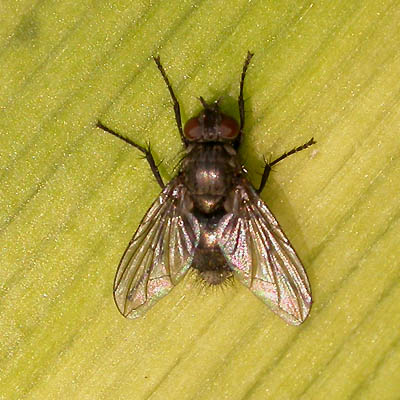|
ちょっと怠けていたら「みんなで作る双翅目Web図鑑」の方にガガンボ科のリストとハナホソバエ科のリストがアップしてました。(力作でんがな・・・感謝)
ワシもあわてて、ニクバエゲニの画像を追加しました。 さて、ここでWikiの双翅目Web図鑑に投稿された方にお願いです。 編集者一覧のところに名前と編集したページを入れてください。 質問等があった場合、転送する場合があるので、出来れば管理人の古田までメールアドレスを御一報いただけると大変ありがたいです。(まあ、多分ほとんどが知り合いだと思うのですが・・)
ハエ男様。
早速記入しておきました。 種名リストも一部修正し、種別の詳細が作成済みかどうかを明記しました。 まだ、どのように作っていけば試行状態ですが、「みんなで作る日本産蛾類図鑑」を目標にしますかね? 人材不足ですね・・・ とりあえずは、既存の図鑑(北隆館かな)を追い越す目標でやりたいですね。 あと、文字にも色をつけたいですね。 中年よ大志を抱け。現実は厳しい(^_^;)
文字色付けについてはシステムの中で研究しますね。(システムそのものを改造しなきゃだめなんだけど、前にやったら表示がぐちゃぐちゃになったから・・怖いんです。)
ということで、リスト作成立候補!ヒメイエバエ科、ナガズヤセバエ科はお盆中にワシがやります。 これ、リストはみんなが手分けしてやったらすごく早くできるんだろうなあ・・ みなさん我こそはって・・のがあればぜひ御協力ください。 市毛さんはリストは基本的には九大目録でやってますよね。並び順はどうやって決めてますか?
その後1時間かけて、フォントカラー化、成功しました。
ハエ男様。
フォントカラー化御苦労様です。 リストは九大目録の双翅目をExcelに入れたものがあったので、ExcelとWordで加工しています。並び順は忘れました。(目録と比較すると適当ですね(^_^;)。そのうち目録に沿って直します。) 種類が多い科を、どのような形で表示するか難しい問題ですね。 試しにガガンボを作ってみましたが、リスト形式では見苦しいので、別の方法も考えたいですね。
いつのまにかこんな素敵なものが作られていたんですね。さっきまで気がつかなかった・・・。
そうそう、双翅目談話会の掲示板に私の立ち上げたメーリングリストの情報書き込んでおきました。クローズドなメーリングリストだからあんまり情報公開できませんが、大御所クラス2名参加しておられます。
ウミユスリカさん>「みんなで作る双翅目Web図鑑」はウミさんの絡んでるWikipediaとは別の観点で、できれば人海戦術的に増殖したいなと考えとります。
特に「双翅目の新しいニュース」については個人では目の通しにくい各種学会誌、地方同好会誌」にある情報を求めてます。ぜひ、書き込んでくださいませ。(拝) |
|
こないだの北陸の能登半島氷見の湧水で見つけたでっかい蚊があったのですが、湧水だからきれいな場所にいる蚊が採れたのかと思ったら・・・オオクロヤブカ・・・
こいつは蚊のなかでも相当きたない所でも住める蚊なのです・・・ちょっとショックだったな・・・あの湧き水は汚れてたのか・・・そんなとこにはイソメマトイはいるはずないだろうし・・・ そんで、昨日は裏山(陣場形山)に行ったのですが、あまりのブユの多さと虫除けを忘れていったのもあって早々に逃げ帰って来ました。ただ、そんな中、頂上のキャンプ場ではシートをしいて半袖、スカートでいちゃついてたカップル(車は地元Noじゃなかった)がいたのですが、彼らの(皮膚)がその後どうなったか大変興味があります・・・まじでどうなったかなぁ・・ |
|
Images 5 and 7 are also likely to be Calliphora sp. Whether they are the same or different as 1 and 2 I do not know.
Nr 4 i do not know, I might have already posted it here or diptera.info. Nr. 6 is a complete mystery and maybe it is not Calliphoridae at all.
I think,
image 5&7 Calliphora lata = Oh-kurobae image 4 is Melinda sp.??
Maybe image 6 is rather a Tachinidae sp with a relatively short antennae.
|
|
Image 1
The first two images show possibly the same species, and a likley Calliphora. C. lata? C. nigribalbis?
The third image is likely to be Pollenia sp.
I think ,image 1 & image 2 is Calliphora lata.
image 3 is Pollenia japonica---kinpatsu-hime-kurobae (Calliphoridae), This species thorax has much golden hear.and,body is black or dark-brown. Pollenia live in mountain area or woods area.not common species.
Thx for your help.
The Pollenia species must be uncommon, since this is the only individual that I have ever seen. Calliphora lata seems to be a very early species in the lowlands, but much later at higher elevations. It was quite common a week ago at an elevation of 2000-2400m. |
|
急用で急遽帰宅しましたが、北陸は事実上1日だけの調査で終わってしまいました。
が、石川県松任市の浜でゴヘイニクバエを1♂3♀をゲット出来ました〜〜!ついでに、メスは、毒ビンの中で、幼虫8頭も 生んでました〜〜!・・・(どうしよう)1齢じゃ、咽頭骨片もまだ未熟だろうしなあ・・ あと、海岸の湧き水を探して今日一日見て回りましたが、湧き水はほとんど見つからず、唯一、氷見市にて海岸沿いの湧き水を見つけましたが、そこではでっかい蚊しか採れませんでした。(本命はイ○メ○トイだったんですけど・・)
ゴヘイニクバエファンの方(そんな人いるかな?)にとりあえず、情報です。
ゴヘイニクバエはエビダレ(エビ汁とも呼ぶ秘伝のたれ)に良く来ます。 海から陸に向かって風が吹いてるときが特に良く効きます。 金沢では皿に入れて3分しないうちに飛んできました。(4頭をとるのにかかった時間は40分くらいです。) とりあえず、これを置いて10分待ってこなければいないと言うことで・・・ エビダレの作り方・・・エビの甲羅(甘えびとか、クルマエビとか、イセエビ、芝エビなんでもいい)をビンにつめひたひたになるくらい水を入れます。そして冷暗所に寝かすこと3ヶ月、見事なフレーバーの液が出来ます。あとは使ったら水を補充、古くなると甲羅からのエキスが出にくくなるので適度に甲羅を追加・・・(塩入れない)・・・3年目くらいになるとにおいも熟成されまろやかになりますが、そこで、新たエビを加えてやるとまろやかさとパンチを両立させたハエ好みの液になるようです。(とりあえず、秘伝のたれ5年目に突入中)高級シェリー酒みたいに作り始めて〜十年ものくらいになったらどうなるか・・・楽しみ?だな・・・ |
|
右手にクマも殴り殺せそうな開墾クワ、左手に直径50cm、6mのサオを持ちそれぞれを片手で操作するワシのスタイルですが、ついに左腕がピキンとなりました。(あの瞬間は星ひゅーまの気分でした・・動かないわけではないけど、いたい・・とりあえず、ひじ痛のため黄金の左のスイーピングはお休みで、いぶし銀の右腕でのスイーピングになります。(ワシはもともと左利きなのです。現在、左手はテーピングにて固定中)
皆様もスイーピングのし過ぎに御注意下さい。 ここ、2週間でサオ5本が折れたのは・・・きっとスイングに無駄な力がかかってるからなんだろうなあ・・(ショック・・) |
|
すげ〜・・・イシアブっすかこれで・・
tgwさんとこの画像を全部見たけど合うのがないっすね〜・・・ tgwさんのお出ましを請うしかないかも・・
ハエ男様、こんばんわ。
tgwさんには声をかけておきました(^。^) イシアブかどうかは別にして、ムシヒキアブなのは間違いないと思います(^_^;)
市毛さん、お久しぶりです。
この種は手元に本州産、四国産合わせて4♂、9♀あるのですが属名もはっきりしません。いつだったかわすれましたが埼玉県昆虫誌の記事でOrthogonisとしていましたがOrthogonisではないでしょう。Hull(1962)のkeyをたどっていくとOrthogonisに落ちますが・・・。 以前、世界のAsilidae各種の写真を眺めていて、ひょっとしてこの属かと思ったことがあるのですが、それ以来手を付けていません。 ハエ男さん、金毛マガリケの件ですが、今、手元にマガリケ全ての標本がないので調べていません。返事が遅くなってすみません。 ムシヒキの課題は山積しています。 はっきりした回答でなく申し訳ないです。
tgwさん、ありがとうございます。
旧北区のマニュアル(CMPD)も、ムシヒキアブ科はヨーロッパ限定で書かれていましたので、こちらのグループは相当難しいのですかね。 綺麗な種類なのに残念です。 時々、ムシヒキアブも採っていますので、今後も宜しくお願い致します。 |
|
北陸にいってきまっす。
|
- Joyful Note -
- Antispam Version -










